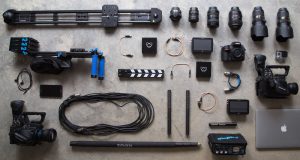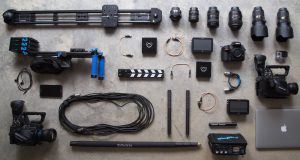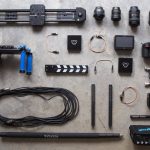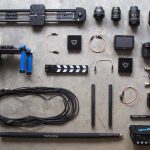This section will teach a person how to create a basic control application on CompactRIO using scan mode. One should see the LabVIEW FPGA Tutorial if the choice is to use the LabVIEW FPGA Interface. One should then have a new LabVIEW Project that consists of the existing CompactRIO system, including the controller, C Series I/O modules, and chassis. An NI 9211 Thermocouple input module will be used in this tutorial; nonetheless, for any analogue input module, the process can be followed.
1. The project is saved by selecting File» Save and entering Basic control with scan mode. Click OK.
2. This project will only consist of one VI, which is the LabVIEW Real-Time application that runs installed on the CompactRIO controller. Right-clicking on the CompactRIO real-time controller in the project and selecting New»VI saves the VI as RT.vi.This one is created by the VI.
3. Three routines are included in the key operation of this application: start up, run, and shutdown. An effortless way to accomplish this order of operation is a flat sequence structure. Place with three frames on the existing RT.vi block diagram a flat sequence structure.
4. Then, a timed loop to the Run frame of the sequence structure should be inserted. The capability to synchronise code to various time basis, including the NI Scan Engine that reads and writes scan mode I/O is provided by timed loops.
5. If the timed loop is to be configured, one should double-click on the clock icon on the left input node.
6.Now, select Synchronise to Scan Engine as the Loop Timing Source. Click OK. This will cause the code in the timed loop to execute once, instantly after each I/O scan, assuring that any I/O values used in this timed loop are the most recent ones.
7. To run synchronised to the scan engine, the step before constructed the timed loop. Now, by right-clicking on the CompactRIO real-time controller in the LabVIEW Project and picking Properties, one should configure the rate of the scan engine itself.
8. Then, choose Scan Engine from the categories on the left and enter 100ms as the Scan Period and all the I/O in the CompactRIO system to be updated every 100ms (10Hz). From this page, the Network Publishing Period can also be set, which regulates how often the I/O values are published to the network for remote monitoring and debugging. After that, click OK.
9.Now that one has constructed the I/O scan rate, it is time to add the I/O reads to the existing application for control. One can simply drag and drop the I/O variables from the LabVIEW Project to the RT block diagram when using CompactRIO Scan Mode. Expand the CompactRIO real-time controller, chassis, and the I/O module the one would like to log. By clicking on it, select AI0, then drag and drop it into the timed loop on your RT.vi diagram.
10. Now, in this project for speciality digital Pulse Width Modulated output, one should configure the digital module so the one can use a PWM signal to control the imaginary heater unit. Right click on the existing digital module in the project and select Properties, to do this. Select Specialty Digital Configuration and a Speciality Mode of Pulse-Width Modulation in the C Series Module Properties dialogue. Speciality Digital mode allows the existing module to perform to pattern based digital I/O at rates significantly faster than is available with the scan interface. Click OK and the existing module will now be in PWM mode.
11. Then a person is ready to add the actual PWM output to the block diagram. To do so, widen the Mod2 object in the project and drag and drop the PWM0 item to the block diagram as it has been done with the AI0 I/O node in the previous step.
12. After that, somebody will want to join the PID control logic to this program. Right click the block diagram to open the functions palette and click on the Search button in the top right of the palette, if one wants to do such a thing.
13. Scan for PID and pick PID.vi in the Control Design and Simulation Palette and drag it to the actual block diagram of the timed loop and wire the PID VI.
14. The set point input is not wired now. That is because it is best practice to keep user interface (UI) objects out of actual high priority control loop. If someone wants to interact with and adjust the actual set point at the run time, the one will want to create a control that can be interacted with in the lower priority loop. Also, if someone wants to create single process shared variables for I/O in the already existing high priority control loop, two controls in our application (set point and stop) are needed to create two new single process shared variables.
A single process is created and the variable is shared by right click on the actual RT CompactRIO Target in the LabVIEW Project and New >> Library should be selected. Rename the library into something perceptive like RTComm. Then, one should right click on the new library and select New>>Variable. That will open the Shared Variable Properties dialogue. The variable should be named SetPoint (for example, the name depends on person’s imagination) and “Single Process” should be selected for the variable type in the Variable Type drop down box. Finally, click on the RT FIFO option in the left-hand tree and click the Enable RT FIFO check box.
15. In the library that has just been created, another single-process shared variable should be made. This variable is for the Stop control that is going to be created that will stop the program when it is needed. All the same settings as the previous Set Point variable except for the type this new variable should possess, and it should be Boolean.
16. Next, some user interface should be created. Such a thing is done in Slide control, Waveform Chart, Numeric control, and Stop (Boolean) control.
17. This program is supposed to be finished now by creating a secondary (non-timed) loop for the actual UI objects and finishing wiring the existing block diagram.
18. Note the extension of I/O to the configuration and shutdown states to ensure that already existing I/O is in a known state when the program begins and ends. The basic control application should be ready to run.






